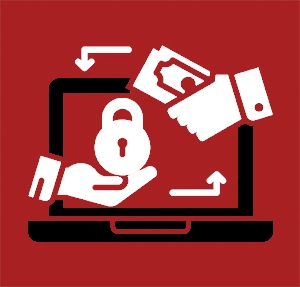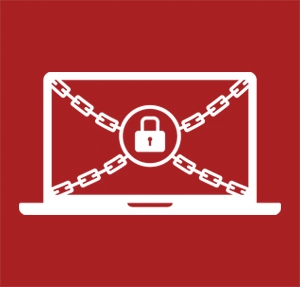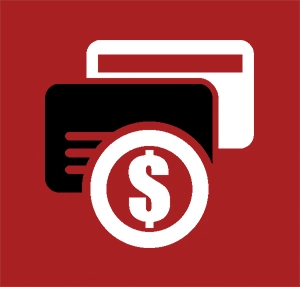Few words strike fear within IT departments like ransomware. The thought of a successful ransomware attack is enough to keep CIOs and cybersecurity leaders up at night. To address these fears, cybersecurity product vendors spend a lot of time touting their tools as the latest weapon against ransomware. Despite all the attention and tools however, ransomware remains a persistent and formidable threat that continues to elude easy prevention.
History of Ransomware
While ransomware became a mainstream concern with the rise of CryptoLocker in 2013, its origins trace back to 1989. That year, an activist hacker distributed infected floppy disks at a World Health Organization (WHO) conference. Once accessed, the malware encrypted file names and demanded a $189 ransom sent to a P.O. box to restore access.
The dawn of the modern ransomware age first began in 2005 with the spread of PGPCoder which proved the viability of encrypting user data and demanding payment. Unlike earlier methods, PGPCoder leveraged the internet and email for distribution, a tactic still used by modern ransomware variants. setting the stage for the evolving threat landscape we face today.
A Bigger Threat Than Ever in 2025
One would think after 20 years that the world would have figured out how to put a stop to ransomware. The truth is, however, that in 2025, ransomware is a bigger threat than ever:
- According to Check Point Research, ransomware attacks rose by 126% in the first quarter of 2025, with North America accounting for 62% of global incidents.
- Honeywell’s 2025 Cybersecurity Report showed that ransomware attacks against the industrial sector jumped by 46% from Q4 2024 to Q1 2025.
- According to Black Frog’s State of Ransomware 2025 report, ransomware attacks surged 21% in January 2025 compared to the same period last year, with 32 distinct ransomware groups orchestrating these incidents.
- According to the latest SonicWall Threat Report, SMBs are facing a surge in ransomware attacks in North America of 8%
These disturbing statistics for 2025 come after a surge in 2024 attacks. In fact, according to the Cyberint Ransomware Annual Report 2024, the fourth quarter of 2024 recorded the highest number of ransomware attacks in any three-month period on record. With these numbers, it should come as no surprise that 6 in 10 businesses suffered a ransomware attack of some type in 2024.
The Multiple Threats of Ransomware
At one time, it was thought that the key to recovering from a Ransomware attack was a 3-2-1 backup strategy. A 3-2-1 backup strategy is one where a company creates three copies of data, maintains 2 different storage types (logical, physical), and one copy off site. While a modernized backup system is a critical element in recovering from a ransomware attack, it only addresses one type of extortion threat. The latest ransomware variants deploy not just one, but two or three overlapping extortion threats:
- Data Encryption: The original threat in which attackers encrypt the victim’s data, blocking access until a ransom is paid for the decryption key.
- Data Exfiltration and Leakage: Before encryption, attackers steal sensitive data from the victim’s network. Should the victim manage to restore their data from the initial attack, the attackers threaten to publish or sell the data unless a ransom is paid.
- Additional Coercion Techniques: Attackers may go a step further by using the stolen data to pressure or extort the victim’s customers, business associates, or other key stakeholders.
This three-pronged approach dramatically heightens the stakes for victim organizations, forcing them into difficult decisions under multiple simultaneous threats.
The Complexity of Ransomware Attacks
One of the reasons why ransomware is so difficult to stop is that these types of attacks rarely occur all at once. Instead, they involve a multi-stage process that can span days or weeks to unfold. While there are many variants, they all follow a basic methodology:
- Stage 1: Ransomware is often delivered to the target through some type of interaction with a user. These can be phishing attempts to gain credential to access to company resources, a web link, or an email attachment. The result is an initial payload that is downloaded which establishes a connection with the attacker’s command and control station from which future attack phases will be implemented.
- Stage 2: With a backdoor established, the attackers begin their reconnaissance to find high value data that can be used for maximum extortion. This data is then exfiltrated and transferred to a secure external location to be used as backup leverage in the extortion process.
- Stage 3: It is here that the encryption process begins. This typically starts with targeting the victim’s backup systems first to undermine data restoration capabilities. Once the encryption process is complete, a ransom note is delivered, and the negotiations begin.
Ransomware is also Easy
For many years, businesses have relied on turnkey cybersecurity solutions to protect them from cyberattacks. Today, attackers use turnkey cybercrime. Ransomware-as-a-Service (RaaS) professional ransomware developers package their ransomware as ready-to-use toolkits and sell or rent them to affiliates under subscription plan that sometimes even include online support. The barrier of entry into cybercrime is now reduced to anyone willing to pay the subscription fee.
Artificial Intelligence (AI) has also made ransomware attacks easier in multiple ways. AI is used to make social engineering far more persuasive and convincing. Attackers can craft convincing phishing emails that mimic internal communication in tone and style or even use audio and video to impersonate company executives. Machine learning (ML) algorithms are used to identify the most vulnerable targets and determine optimal attack methods. In some cases, AI can be used to mutate its own code in real time to evade protection or autonomously execute an entire ransomware campaign from start to finish.
Ransomware is a Crime of Opportunity
In a year when ransomware strikes every 14 seconds, protecting against these relentless threats demands more than a patchwork of security tools. The challenge has intensified as businesses increasingly adopt hybrid architectures and multi-cloud environments, exponentially expanding their attack surfaces. Most businesses lack the resources to secure every potential entry point across their attack surface. While that may be a sobering reality, the good news is that perfection isn’t the expectation. What organizations need is a reasonable security strategy that demonstrates due diligence and meets their duty of care obligations.
Ransomware is a crime of opportunity. Like a common street criminal that looks for easy prey, cybercriminals look for organizations that are highly vulnerable. Resilience starts not with more tools, but with a smarter posture composed of layered defenses, visibility into high-risk zones, and swift incident containment.
The Value of a Risk Based Assessment
What you need is a strategic understanding of how best to protect against these and other threats. According to Sun Tzu’s classic treatise, The Art of War, “When you know both yourself and your enemy, you can win a hundred battles without a single loss.” By understanding where your organization is most vulnerable to an attack, you will be able to focus on how an attacker will launch a ransomware attack on you. This is where the value of a risk based assessment comes into play.
HALOCK’s risk-based security strategy is unique because it synthesizes guidance and best practices from several of the most respected frameworks and threat intelligence sources in cybersecurity, including CIS® Controls, MITRE ATT&CK, NIST standards, and real-world threat data from the VERIS Community Database (VCDB). By integrating these frameworks along with our Duty of Care Risk Analysis (DoCRA) methodology, our Risk-Based Threat Assessment helps you understand where your biggest vulnerabilities are and what to do about them without wasting time or resources. Though every assessment is customized to each organization, the basic structure is as follows:
- Our assessment starts with conducted interviews with your team to get a clear understanding of how your current security measures are working on a daily basis using the CIS Critical Security Controls as our guide.
- We then develop a comprehensive risk register that identifies your organization’s specific threats and scores for each relevant CIS control, providing a clear, measurable assessment of your current security posture and actionable insights for strategic cybersecurity improvements.
- We generate intuitive heat maps for each cyberattack type, including ransomware, that visually highlight your most critical vulnerabilities and highest-risk threats, enabling you to prioritize resources where they’ll have maximum impact.
Throughout your Risk Based Threat Assessment, we provide guided analysis and tailored recommendations at each stage, ensuring you know exactly what to tackle first. You’ll receive a priority roadmap that strategically strengthens your risk posture by focusing improvements where they’re needed most—no guesswork, just clear direction.
SUMMARY: The Risk-Based Threat Assessment objective is to identify high priority areas for preventing and recovering from a ransomware incident by understanding the deficiencies a company has in breaking the cyber kill chain and then recovering from an incident if it occurs.
The truth is that businesses have been battling with the ransomware threat for decades. The deciding factor in the fight against ransomware won’t be a tool set, but a strategic understanding of where your vulnerabilities are and how ransomware attackers will exploit them. Start your strategic initiative today by reviewing your working environment with HALOCK and reduce not only the attack surface of your enterprise, but the ominous threat of ransomware itself.
Review your security program for your teams to minimize your risk.
READ MORE HALOCK BREACH BULLETINS






